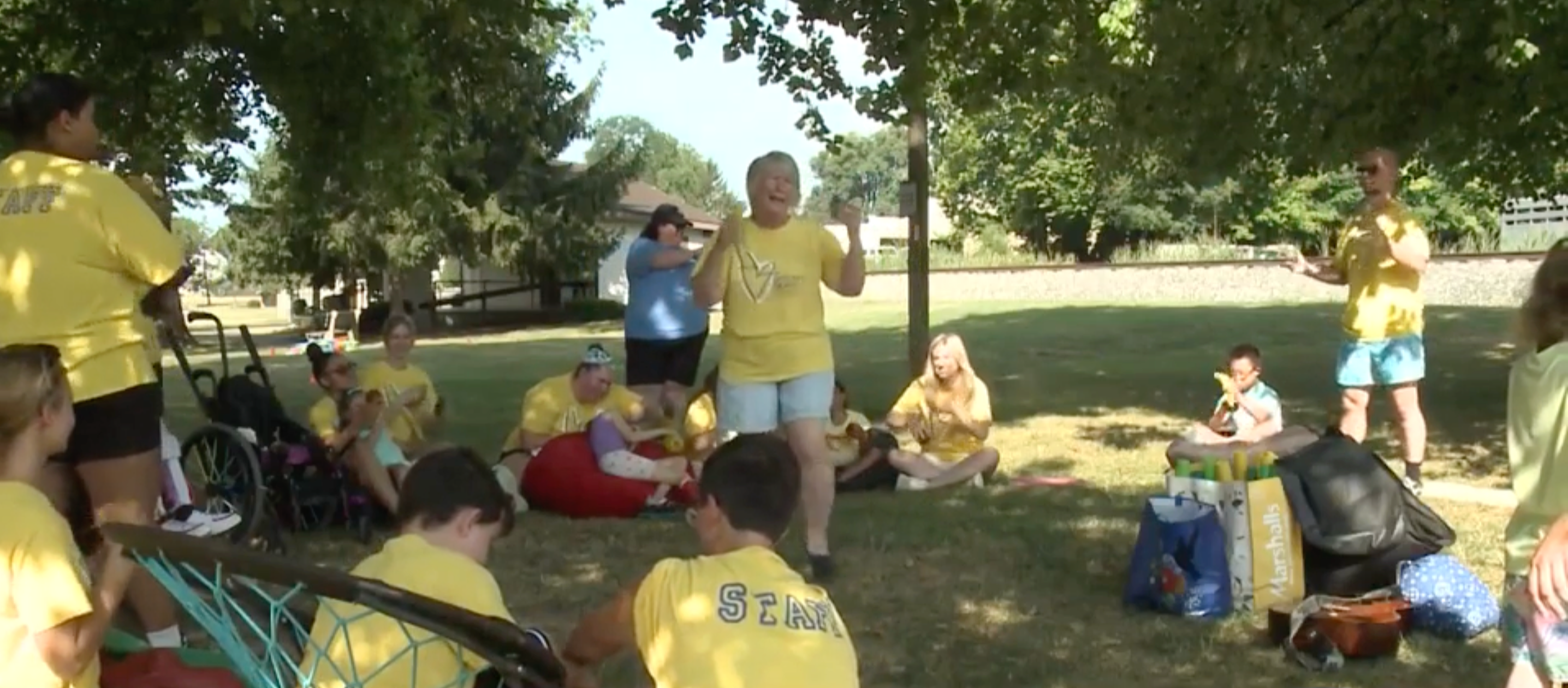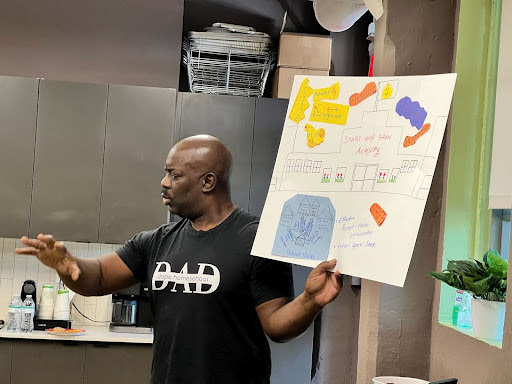Jump to: Top Tasks | From the Field | Key Resources | Moments of Resilience
It is week 182 in our new reality and we are thinking about what the fiscal cliff will mean for America’s students.
“It’s a perfect storm of financial chaos brought on by the abrupt ending of federal pandemic relief funds, falling district enrollments, and slowing state revenues,” Marguerite Roza and Katherine Silberstein write in their new briefing for the Brookings Institution. “The question now is whether leaders will take action to ensure that our most vulnerable students don’t once again feel the brunt of the effects.”
Without strong leadership, the impact of the end of federal emergency funding will likely be largest for the poorest students in the country. As Roza and Silberstein explain: “High-poverty communities will see sharper impacts to their school budgets in part because of how ESSER funding was structured: At the outset, ESSER funds were intended to provide greater levels of support for high-need schools.”
SUBSCRIBE
At the same time, in example after example, we see school districts struggling to get ahead of this reality by making hard choices. “At its height, San Francisco’s newcomer school — a beacon for Chinese immigrants who’d just landed in the city — served 200 students. Today, just 11 sit in the desks,” Jill Tucker writes in the San Francisco Chronicle. “With two teachers, a principal, a clerk and cafeteria workers, the district expects to spend about $832,000 this year to operate the school … Based on current enrollment, that’s $75,000 per student.”
Meanwhile in Texas, the Dallas Morning News reports that in the competition to build the most expensive high school football stadium, the bar has been raised again with Prosper school district proposing a new $94 million stadium to supplement their existing $53 million stadium. “Runners up include: Cy-Fair ISD’s $80 million stadium, McKinney’s $70 million coliseum and Allen’s $60 million arena, which at the time sounded like a lot. Now it sounds like a bargain,” writes Dave Lieber.
Between schools that should be closed but aren’t and stadiums that don’t need to be built but are, it’s worth pausing to ask: in the coming era of tight budgets, what will it take to focus on maximizing academic success?
Last week, we explored the end goal we are all working towards and put a spotlight on upcoming innovations in measurement. This we take a look at a breakthrough win on universal school choice in North Carolina and examine the steps needed to match an expansion of parental choices with better information for families to navigate these options.
TOP TASKS
A purple state breakthrough on universal school choice
“North Carolina will become the 10th state in the nation to offer taxpayer-funded universal school choice,” writes T. Keung Hui for the Raleigh News & Observer. “The General Assembly gave final approval Friday on a new state budget that triples funding for the Opportunity Scholarship program and ends income restrictions for getting a private school voucher. Starting next school year, every family in the state can apply for a voucher to help pay for the cost of attending a K-12 private school.”
“Funding for the program would increase each year, reaching $520 million by 2032,” Linda Jacobson elaborates at The 74. “The program is expected to be the second largest in the nation, after Florida’s. The budget that included the plan passed 26 to 17 in the Senate and 70 to 40 in the House, with five Democrats crossing the aisle. … The bill’s passage was the culmination of years of work for Marcus Brandon, a former Democratic state representative who considered himself a progressive and once thought vouchers were ‘evil.’ ‘My constituents are the ones that led me here. They’re the ones that talked about the lack of educational opportunities,’ said Brandon, who represented the Greensboro area until 2015. He’s now executive director of NorthCarolinaCAN, part of the 50CAN network.”
This is the first time a state without a Republican trifecta–control of both houses of the legislature and the governorship–passed a universal ESA, suggesting both a breakthrough for the school choice movement and a template for other purple states.
Marcus sat down with Marc in a video interview to discuss the victory, the importance of enduring advocacy campaigns and the families that motivated him to stay committed to the cause over the past decade.
“This is a victory for all kids,” Marcus shared. “I can give you an example of an LGBT kid who has been bullied and contemplated suicide. There are people who believe that the only kids who should have safe and healthy choices are those with money. This is for that LGBT kid. This is for Ms. Brown, who doesn’t have any money, whose kid has 3 Fs, 2 Ds and a C, already been suspended twice …Throughout my career, I’ve met tons of these families who have already benefited from these bills. And now, we’ve expanded that access to everyone.”
THE TASK OF THE WEEK IS
A family’s right to know starts with good information on student performance
One of the five promises in our Believe in Better policy framework is “a family’s right to know what’s working.” That includes both a right to know how “exactly how much money is being spent on your child and how those dollars are put to use” and a right to know “the performance of any educational choice you choose.”
Right now states are undermining these rights with vague budgets and ever longer release times for student achievement results.
Despite the fact that most students took these state tests back in the spring and have now been back in classrooms for weeks, states have only just begun the process of rolling out last year’s assessments. For those who have followed along with us as NAEP and NWEA scores were released, the news will not be surprising.
In New York, results have been delayed for the second year in a row, with New York City students receiving individual scores earlier this month but overall numbers still unreleased. Furthermore, state officials are telling parents that due to another round of changes to the tests they are not compatible with previous years’ results. Without releasing the state or district averages, parents are left to guess what their child’s results mean.
In New Mexico, the state is “months behind” in their release of state test results, which were expected by families last May. As of today, they’re still not available.
In Massachusetts, scores indicate students remain far below pre-pandemic achievement levels and for many students, schools and districts, did not improve at all despite interventions and the infusion of federal dollars.
In Oregon, the state test results were noted as “virtually identical to 2022’s abysmal outcomes” by the Oregonian.
Yet as Jenny Anderson reported in TIME, 90% of American parents believe their children are currently proficient in reading and mathematics. In short: our achievement information system is broken.
While states are sprinting ahead in giving families the ability to choose the education that’s right for them, they have stumbled out of the block in the work to ensure that parents have the timely and accurate information needed to make smart choices. In a rapidly changing system, it’s crucial that assessment and transparency grow alongside this expansion of choice.
THE TASK OF THE WEEK IS
FROM THE FIELD
Louisiana Kids Matter’s Kelli Bottger appeared on the local NBC affiliate to voice support for passage of the federal Educational Choice for Children Act, which would assist in filling the gap for private schools for eligible students. “This gives parents the flexibility to say, ‘You know, my public school isn’t catching up my kids as fast as they should, I can’t afford private school, but with this little bit of help I can make it work,” Kelli said.
The GeorgiaCAN team congratulates parent and former YouCAN advocate Dr. Latasha Adams on her acceptance as a Building Excellent Schools (BES) fellow.
HawaiiKidsCAN’s David Miyashiro, hosted a youth advocacy group from Northern Ireland and the Republic of Ireland, which included meetings with local partners, funders and a sit-down with the Governor and his family.
Key Resources
The Fordham Institute published a bipartisan policy blueprint created by a committee of education reformers across the ideological spectrum including 50CAN’s Derrell Bradford and NewMexicoKidsCAN’s Amanda Aragon.
The 74 Million reports on the growing regulatory barriers that are being faced by pods and microschools as they attempt to expand and reach more students.
The Brookings Institution examines partisan divides over various strategies to support teacher recruitment, finding sharp divides between liberals and conservatives over ideas like a four-day school week.
New Scientist looks at the rise of “therapy speak” and asks whether it is doing more harm than good in schools.
The team behind The Yass Prize have announced their quarter-finalists. Congratulations from 50CAN to all of the awardees!
The Urban Institute’s Cary Lou looks at the impact on children from the sunsetting of pandemic-era expansions of the child tax credit and other emergency payment programs.
CRPE released their “State of the American Student” report, putting a spotlight on the vulnerable state of high schoolers.
FutureEd looks at the state of grade inflation in the US, finding that math is not immune from the trend.
New America explores how we can better support students who are parents.
The New York Times investigates a 30-point drop over the past decade in the percentage of high-school students who believe a college degree is “very important.”
Writing in Education Next, John Bailey argues that when it comes to AI “the fundamental task of policymakers and education leaders is to ensure that the technology is serving sound instructional practice.”
Moment of Resilience

Nina Rees announced on Friday that she is departing the National Alliance for Public Charter Schools at the end of 2023 after eleven years at the helm. Her tenure saw an expansion of charter school laws to 46 states, a 60 percent increase in the number of students attending charters, and a 75 percent increase in the federal Charter Schools Program (CSP) to $440 million a year. But Nina’s impact on the field extends far beyond these numbers to her powerful and relentless focus on the mission of her organization and the educational reform movement at large. Through all the dramatic shifts in the political landscape, Nina stayed focused on the power of expanding quality choices for kids. She helped bridge partisan divides and was a champion of new voices and new educational entrepreneurs. We have been honored at 50CAN to work alongside her these past 11 years and are proud to call her a friend. We can’t wait to see what she does next and we look forward to spotlighting it in this roundup in the coming year.







